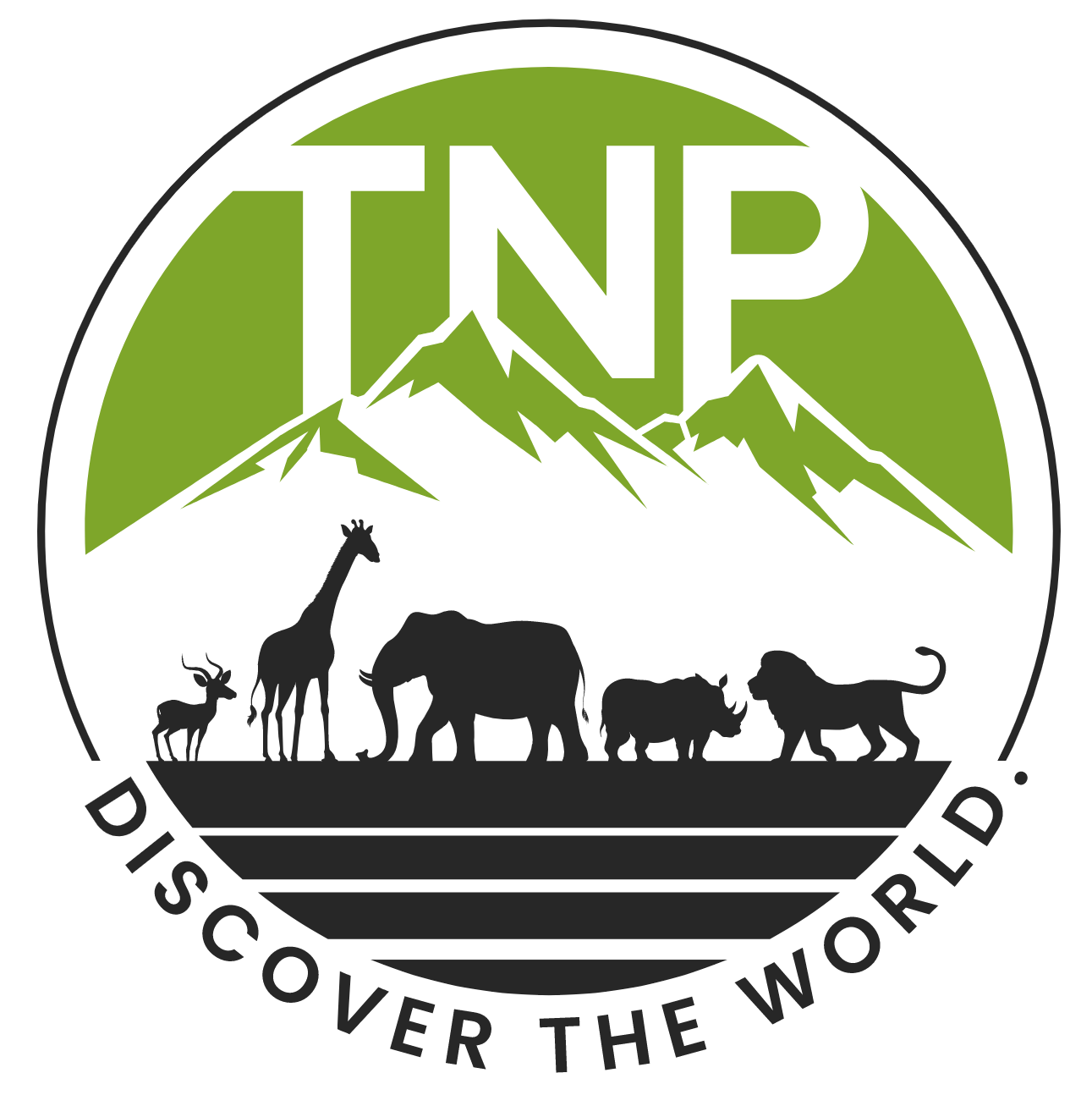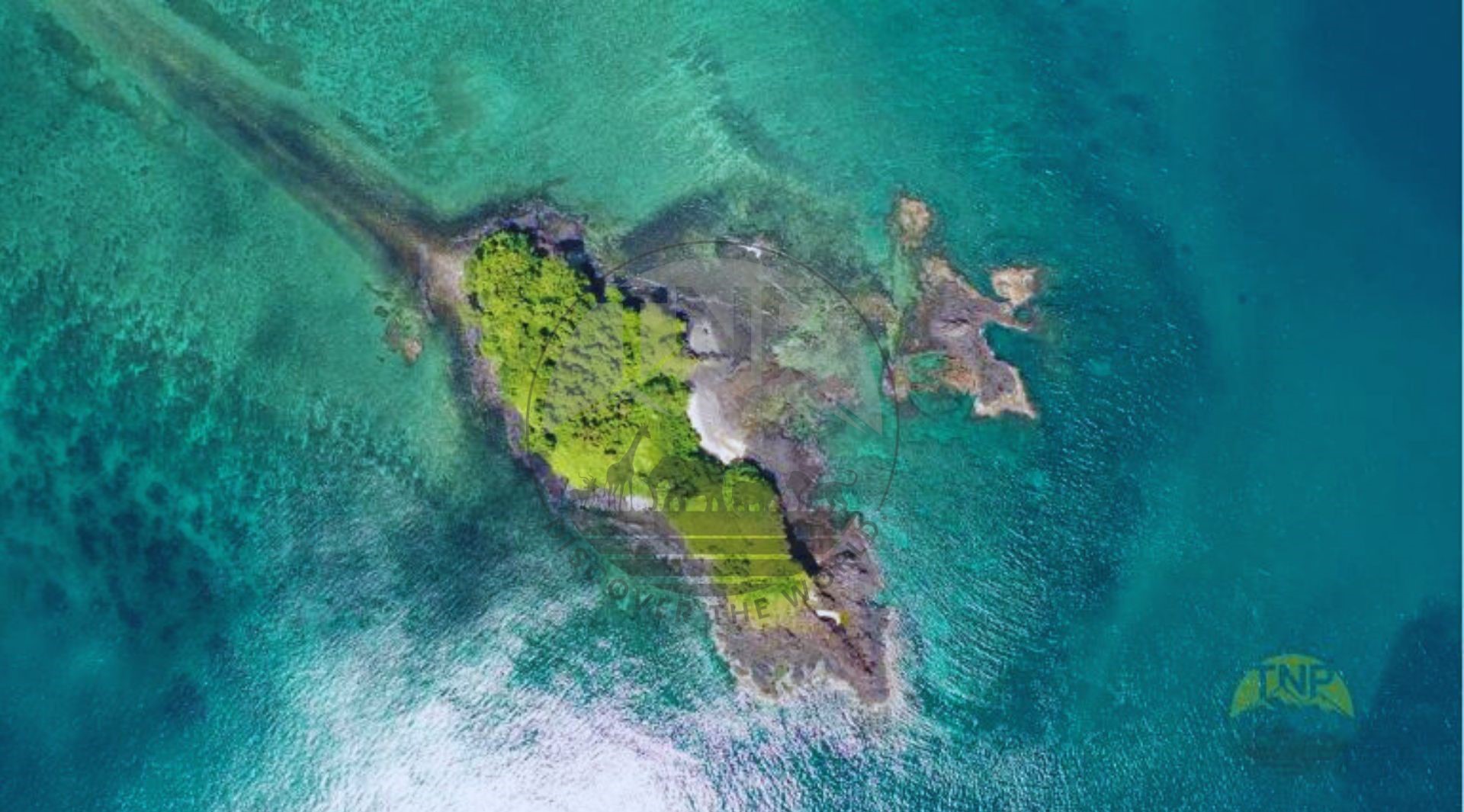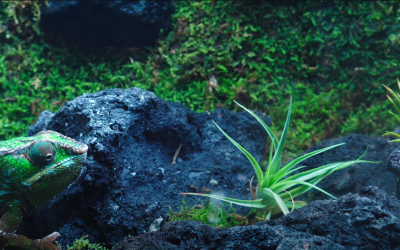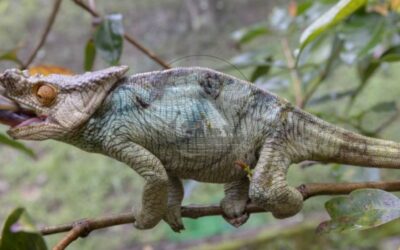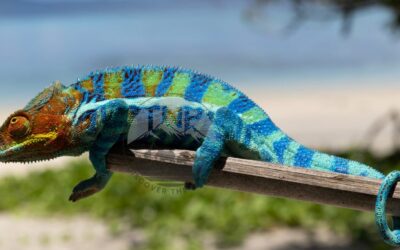I had five opportunities to visit Madagascar, and I took all of them. It’s a place of wild beauty, from the rainforests to the unique Tsingy de Bemaraha and beautiful beaches like Andilana. Each trip showed me something new, like the rare golden bamboo lemur and the whales in the Indian Ocean.
This blog shares my tips for seeing the best spots. I’ll tell you how to get there, what you’ll see, and what to do. From hiking in the Amber Mountains to diving on the island of Nosy Be and seeing the Avenue of Baobabs, I’ll guide you through Madagascar’s wonders.
Top 10 Places To See When You Visit Madagascar
Amber Mountains
The Amber Mountains are a must-visit spot in Madagascar, known for their stunning landscapes and unique wildlife. Here’s everything you need to know about exploring this beautiful area.
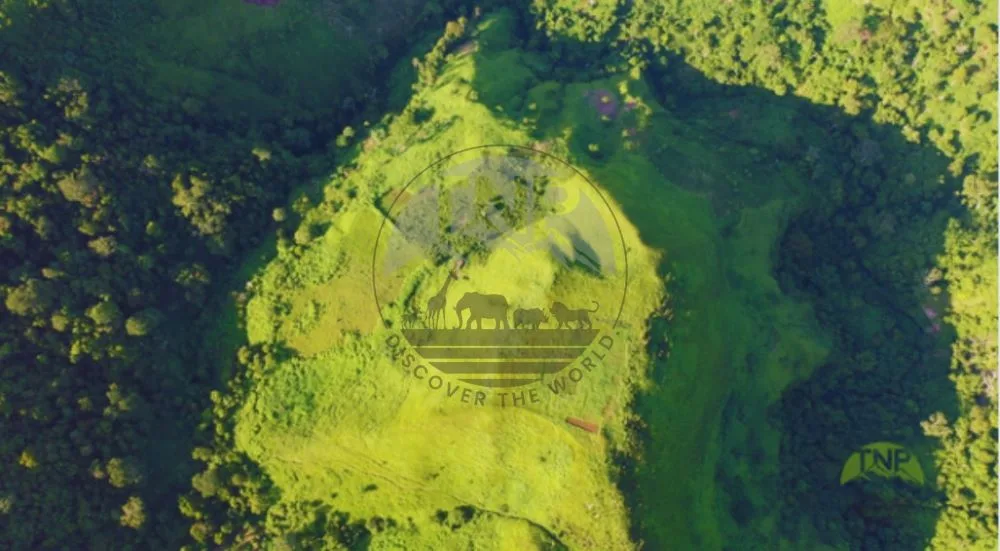
How To Get To The Amber Mountains
Head to Antsiranana (also known as Diego Suarez) to start your adventure in the Amber Mountains. From there, you can rent a car or take a tour that takes you straight to Amber Mountain National Park. The scenic drive gives you a sneak peek of what’s to come.
What You’ll See in The Amber Mountains
Once inside the park, you’ll be surrounded by the lush amber mountain forest. This place is famous for its sweet amber mountain forest honey. But the real stars are the animals that call this place home.
Keep your eyes peeled for the amber mountain fork-marked lemur and the colorful mountain rock thrush. These animals are unique to the area and are a treat to see in their natural habitat.
Things to Do in the Amber Mountains
There’s plenty to do in the Amber Mountain National Park. Hiking through the forest is a great way to see the area’s beauty up close. You might even spot the Montagne D’ambre leaf chameleon or other chameleons, which are pretty cool to see because of their colors and how they blend into their surroundings. Birdwatching is also fantastic here, especially for catching a glimpse of the amber mountain rock thrush.
Pro Tips
- Visit early in the morning or late in the afternoon for better wildlife spotting and ideal photography lighting.
- Consider hiring a local guide for expert insights and access to the best viewing spots.
- Don’t miss trying the amber mountain forest honey for a delicious taste of your adventure.
Andilana Beach
During my first visit to Madagascar, I enjoyed exploring Andilana Beach, arguably one of the most stunning beaches on Nosy Be, Madagascar’s renowned island paradise. Here’s a detailed look at what makes Andilana Beach a must-visit destination.
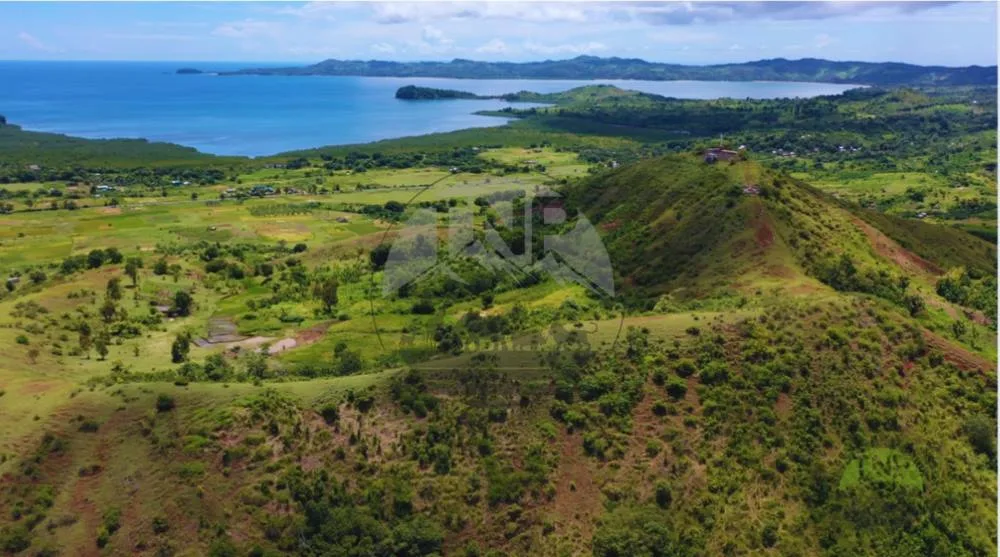
Getting to Andilana Beach
Andilana Beach is located on the northern tip of Nosy Be, an island off the northwest coast of Madagascar. Reaching Nosy Be is straightforward, with flights from Antananarivo, Madagascar’s capital, to Fascene Airport. From there, a short drive will take you directly to the pristine shores of Andilana Beach.
What You’ll See in The Andilana Beach
Andilana Beach is everything you’d dream of a tropical beach to be. Its crystal-clear waters, paired with soft, white sands, make it a piece of paradise. The beach stretches far and wide, offering plenty of space to relax without feeling crowded.
Things to Do in Andilana Beach
Andilana Beach isn’t just about lounging on the sand. The water here is perfect for swimming, and the beach’s location makes it ideal for watching breathtaking sunsets. Water sports and other activities are readily available for those staying at one of the beach’s resorts.
Hotels And Resorts At The Andilana Beach
Andilana Beach is known for its fantastic selection of resorts, from all-inclusive and luxury options to charming beachfront stays. The Andilana Beach Resort is a standout, offering both luxury and comfort, perfect for those looking to indulge.
Plenty of Nosy Be hotels and resorts also cater to a range of budgets, ensuring everyone finds their slice of paradise. Whether you’re after the ultimate relaxation experience with ocean views or convenient all-inclusive packages for stress-free planning, Andilana Beach’s accommodations have you covered for an unforgettable visit.
Pro Tips
- Visit Andilana Beach during the shoulder seasons for pleasant weather and fewer crowds.
- Explore local eateries around Nosy Be to experience authentic Malagasy cuisine.
Click here to learn more about Madagascar’s weather and to find out which is the suitable season to visit.
Ankarana Tsingy National Park
During my second trip to Madagascar, I had the incredible opportunity to explore the Ankarana Tsingy National Park, unlike any other on the island. Known for its jagged limestone formations called “Tsingy,” this park offers a unique adventure for those willing to delve into its mysteries.
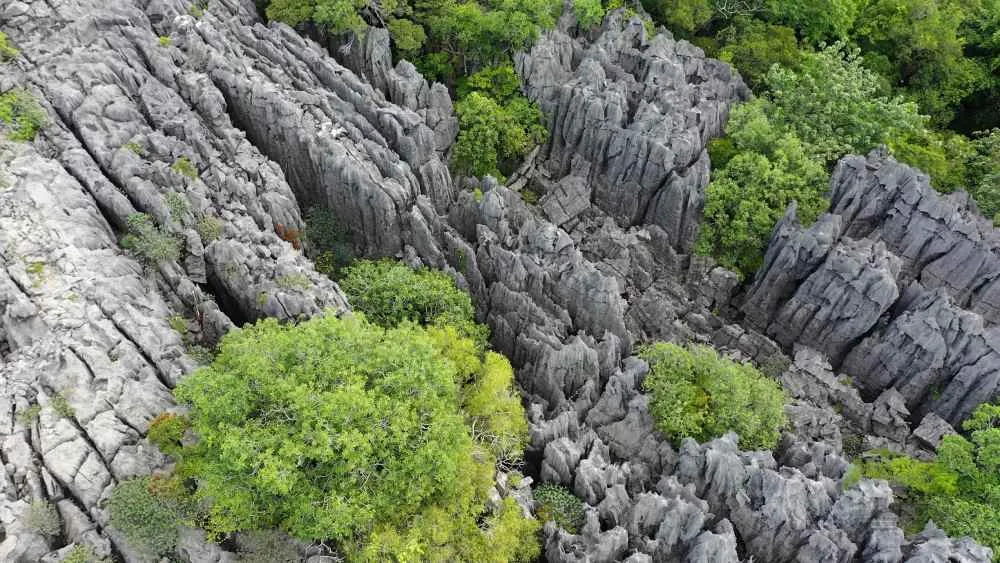
Getting to Ankarana Tsingy National Park
Located in northern Madagascar, getting to Ankarana Tsingy National Park is an adventure. The nearest town is Diego Suarez, where you can hire a vehicle to take you to the park. The journey offers a glimpse into the diverse landscapes of Madagascar, setting the stage for the wonders of Ankarana.
What You’ll See At The Ankarana Tsingy National Park
Ankarana Tsingy National Park is a world of its own. The park is famous for its Tsingy formations – sharp limestone pinnacles that create a dramatic landscape. As you navigate through the park, the beauty of Ankarana Madagascar unfolds with every step. The park is also home to the Crocodile Caves, an underground network of rivers where crocodiles dwell in the shadows, adding an element of mystery and thrill to the adventure.
Things to Do At The Ankarana Tsingy National Park
Exploring the Ankarana Special Reserve within the park, you’ll find a variety of trails leading to breathtaking viewpoints over the Tsingy formations. The park is also part of the National Parks in Madagascar, offering a glimpse into the country’s unique biodiversity. Trekking through the park, you might encounter various species of lemurs and birds, making it a haven for wildlife enthusiasts.
Where to Stay At The Ankarana Tsingy National Park
For those looking to stay close to the park, Ankarana Lodge Madagascar offers comfortable accommodations that blend into the natural surroundings. Staying near the park allows for early starts to your explorations, maximizing your time in this extraordinary landscape.
Pro Tips
- Wear sturdy footwear for safe navigation through Ankarana Tsingy National Park’s rugged terrain.
- Hire a local guide for valuable insights and safe passage through the Tsingy formations.
- Carry enough water and sun protection for a challenging yet rewarding journey through the park.
Avenue of Baobabs
On my second visit to Madagascar, I stopped by the Avenue of Baobabs, a place that’s as magical as it sounds. This iconic avenue has become one of Madagascar’s most photographed locations, and experiencing it firsthand was unforgettable.
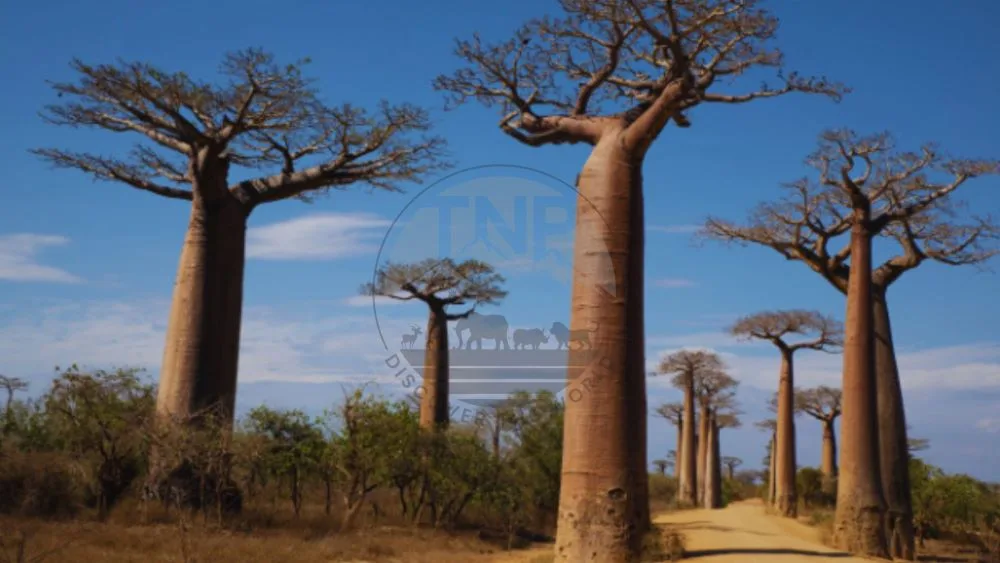
Getting to the Avenue of Baobabs
The Avenue of Baobabs is easily accessible from the city of Morondava, located on the west coast of Madagascar. A short drive takes you to this natural wonder, where the towering baobab trees line the dirt road, creating a stunning landscape that feels like stepping into another world.
What You’ll See At The Avenue of Baobabs
Walking down the Avenue of Baobabs, you’re surrounded by these enormous trees, known as the baobab tree of life. These trees, some over 800 years old, are a testament to the resilience and beauty of nature. The baobab meaning, often associated with strength and life, is evident as you gaze up at their massive trunks and sprawling branches. During my visit, I captured countless avenues of the baobab’s photos, each trying to encapsulate their grandeur.
Discovering Baobab’s Secrets
Beyond their impressive stature, baobabs are fascinating for their fruits, flowers, and seeds. The baobab flower is a rare sight, blooming only at night, while the baobab fruits and seeds are known for their nutritional value and health benefits. This tree truly is the tree of life in Madagascar, providing sustenance and shelter to many species, including humans.
Pro Tips
- Visit during sunrise or sunset for the best light to capture the silhouette of the baobab trees.
- Learn to pronounce ‘baobab’ (bah-oh-bab) to communicate easily with locals.
Indian Ocean Madagascar
Every time I went to Madagascar, I made it a point to explore the stunning Indian Ocean Madagascar coastline. Nestled in the vast Indian Ocean, Madagascar is a gem that offers more than just beautiful beaches; it’s a biodiversity hotspot teeming with unique wildlife and vibrant cultures.
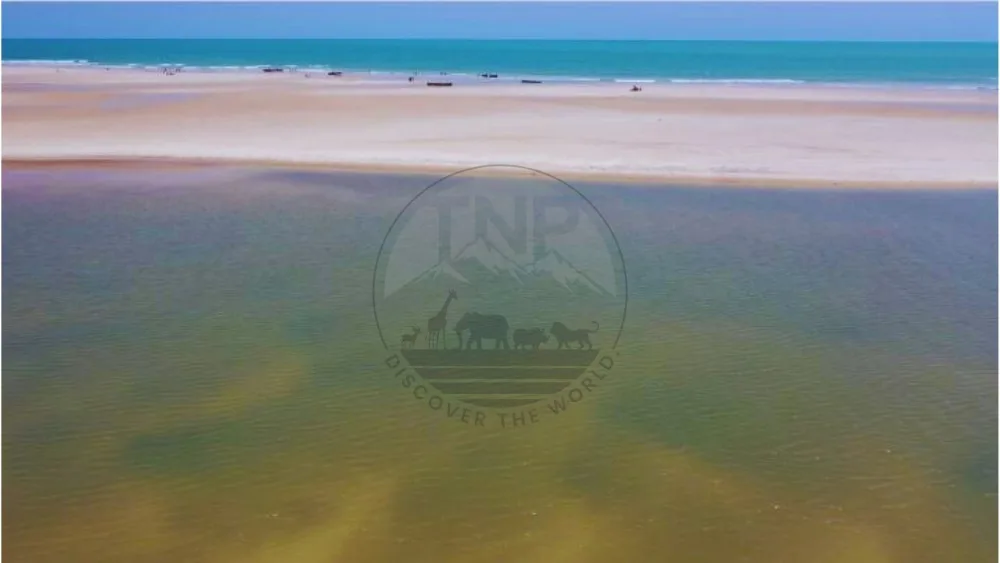
Madagascar in the Indian Ocean
Yes, Madagascar is located in the Indian Ocean, off the southeastern coast of Africa’s largest island. This island, the fourth largest in the world, is surrounded by the clear, warm waters of the Indian Ocean, making it an ideal destination for beach lovers and marine enthusiasts.
Biodiversity Hotspot
The waters around Madagascar and the Indian Ocean islands are recognized as biodiversity hotspots. This means the region is incredibly rich in species found nowhere else on Earth. The coral reefs, mangroves, and marine life here are beautiful and critically important for the environment.
Exploring the Wildlife
The Indian Ocean around Madagascar is home to a fascinating array of animals. The diversity is astounding, from the vast coral reefs teeming with colorful fish to the majestic whales that migrate through these waters. Madagascar and the Indian Ocean islands also include several species of turtles, sharks, and the elusive dugong, making them fantastic places for snorkeling and diving.
Madagascar and the Indian Ocean Islands
Traveling around Madagascar and the Indian Ocean islands, you’ll find each island has its unique charm. The islands are known for their lush landscapes, pristine beaches, and the warm hospitality of the local communities. Whether you’re exploring the remote islets or the more developed areas, there’s a palpable sense of adventure.
Pro Tips
- Respect the natural environment and practice responsible tourism due to the fragile ecosystems of the Indian Ocean Madagascar.
- Explore beyond the beaches to discover Madagascar’s interior landscapes and wildlife.
- Engage with local communities to enrich your travel experience by understanding their cultures and traditions.
Matka Canyon
I must clarify a mix-up from my previous mention: Matka Canyon isn’t located in Madagascar; it’s a stunning natural wonder found in North Macedonia. Nevertheless, I had an unforgettable adventure there during my travels, which I’m eager to share, focusing on the essence and activities that make Matka Canyon a must-visit spot.
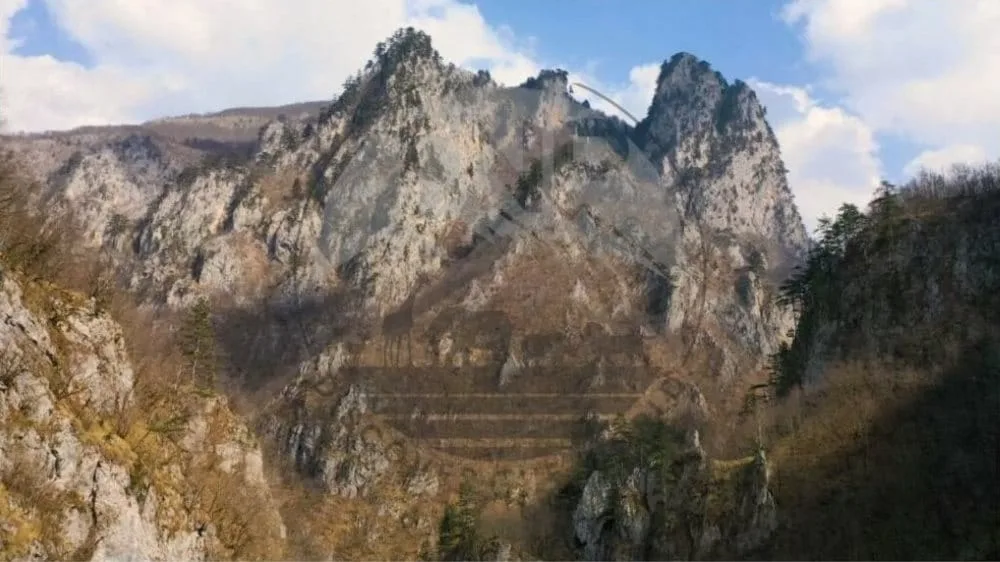
Discovering Matka Canyon
Matka Canyon is nestled just a short distance from Skopje, the capital of North Macedonia. Getting from Skopje to Matka Canyon is easy, with options ranging from a local bus to a quick car ride. The journey itself offers scenic views, setting the stage for the natural beauty that awaits.
Kayaking and Boat Trips
One of the first things I did was rent a kayak. Matka Canyon kayak experiences allow you to glide through the calm waters, surrounded by the towering canyon walls. It’s an incredibly peaceful way to take in the sights. The Matka Canyon boat trip is a fantastic choice for those who prefer a more laid-back approach. These guided tours delve deeper into the canyon, revealing hidden nooks and crannies not visible from the shore.
Hiking and Swimming
Matka Canyon is laced with hiking trails that offer varying levels of difficulty. The trails lead you through lush forests and offer vantage points with breathtaking views of the canyon and the Treska River. On hot days, swimming in Matka Canyon is a refreshing treat. The water is crisp and invigorating, perfect after a day of hiking or kayaking.
Things to Do in Matka Canyon
Matka Canyon is rich with other activities beyond kayaking, boating, hiking, and swimming. Exploring the ancient monasteries tucked away in the canyon, such as St. Andrew’s Monastery, adds a cultural dimension to the visit. Photography enthusiasts will find endless inspiration in the canyon’s dramatic landscapes and the diverse flora and fauna.
Pro Tips
- Wear comfortable shoes and carry water for hiking trail explorations.
- Visit during the week to avoid weekend crowds.
- Take your time to fully enjoy Matka Canyon, connecting with nature through each activity.
Nosy Be
I have visited Nosy Be three times now. It’s a tropical paradise known for its vibrant marine life and luxurious resorts. Here’s a deep dive into my experiences and recommendations for anyone visiting Nosy Be. There are many other small islands in Madagascar.

Getting to Nosy Be
Reaching Nosy Be is straightforward, with options including ferries and flights. I took one of the flights to Nosy Be Madagascar from Antananarivo, which was convenient and offered stunning aerial views of the island. Antananarivo to Nosy Be flights are frequent, making the island accessible to travelers.
Diving and Snorkeling
Nosy Be is a diver’s dream. With several diving centers, such as Sakalav Diving Nosy Be, Tropical Diving Nosy Be, and Manta Diving Nosy Be, the island offers a range of underwater experiences. Nosy Be scuba diving and snorkeling are must-do activities, where you can explore coral reefs teeming with colorful fish, manta rays, and sometimes, whales. The visibility is incredible, making every dive an unforgettable adventure.
Where to Stay At The Nosy Be
Accommodation options in Nosy Be cater to all preferences and budgets. There are cheap hotels, from the eco-friendly Ecolodge Nosy Be to luxurious options like Eden Lodge Nosy Be and Andilana Beach Resort Nosy Be. I stayed at the Loharano Hotel Nosy Be, which offered a perfect blend of comfort and natural beauty. There are also mid-range hotels
Airbnb Nosy Be Madagascar has numerous listings for those preferring a more personalized stay. Luxury hotels in Nosy Be Madagascar, such as the Royal Beach Hotel Nosy Be, provide top-notch amenities and service, ensuring a memorable stay.
Wildlife and Nature
Nosy Be is not just about the water; the island is also home to unique wildlife, including the Nosy Be panther chameleon. A visit to Lokobe Nosy Be is essential for lemur experiences, offering a chance to see these incredible creatures in their natural habitat. The lush landscapes and diverse ecosystems make Nosy Be a nature lover’s paradise.
Pro Tips
- Plan your diving activities with a reputable Nosy Be diving center to ensure safety and the best ways to experience.
- Consider staying at an ecolodge in Nosy Be to enjoy a closer connection with nature.
- Don’t miss out on exploring the island’s interior, especially Lokobe Reserve, to see lemurs and other wildlife.
Tsingy De Bemaraha National Park
On my third visit to Madagascar, I ventured to the Tsingy de Bemaraha National Park, a UNESCO World Heritage site that is a testament to nature’s artistry. This park, often called the Madagascar Stone Forest or Rock Forest, is unlike any place I’ve ever seen.
Getting to Tsingy de Bemaraha National Park
The journey to Tsingy de Bemaraha National Park is an adventure in itself. Located in the western part of Madagascar, the most common route involves a drive from Morondava. The road can be rough, and a 4×4 vehicle is recommended. Despite the challenging access, the experience of exploring this unique landscape is worth it.
The Majestic Landscape
Tsingy de Bemaraha is known for its limestone karst formations, known locally as “Tsingy.” The Grand Tsingy and the Tsingy de Bemaraha Strict Nature Reserve are the park’s main attractions, featuring towering limestone spires that create a stone forest. Walking through the park, you’re surrounded by these sharp pinnacles, which water has sculpted over millions of years.
Exploring the Park
Exploring Tsingy Madagascar requires some preparation and caution due to the sharp and uneven terrain. However, the park offers a network of bridges and walkways that allow visitors to navigate through the stone forest safely. The views from these walkways are breathtaking, offering a panorama of the jagged landscape that stretches as far as the eye can see.
Flora and Fauna
Despite the seemingly inhospitable terrain, Tsingy de Bemaraha is teeming with life. The park is a sanctuary for various species of lemurs, birds, and plants that have adapted to thrive in this unique environment. The diversity of life here reminds us of Madagascar’s status as a biodiversity hotspot.
Pro Tips
- Wear sturdy hiking shoes to navigate the sharp and uneven surfaces of the Tsingy formations.
- Hiring a local guide is mandatory and enriches your visit with insights into the park’s geology, wildlife, and conservation efforts.
- Plan your visit between April and November, as the park is often inaccessible during the rainy season.
Tsiribihina River
During my fourth visit to Madagascar, I embarked on an unforgettable adventure along the Tsiribihina River, a journey that offered a unique glimpse into the heart of this incredible island. Here’s a closer look at my experience exploring one of the significant rivers of Madagascar.
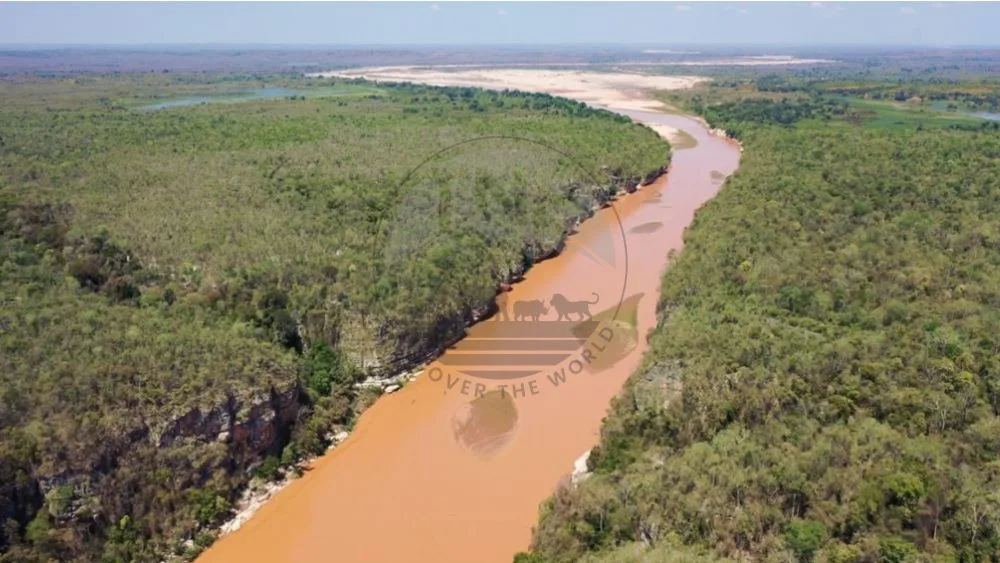
Getting to the Tsiribihina River
The adventure began in Miandrivazo, a town that is the starting point for many Tsiribihina River trips. Accessing the river involves a boat trip that takes you away from the hustle and bustle of city life and into the tranquil beauty of Madagascar’s natural landscapes.
What to See At The Tsiribihina River
The Tsiribihina River journey is a scenic voyage through Madagascar’s heartland. Along the way, the river’s winding path reveals lush landscapes, remote villages, and an abundance of wildlife. The sight of locals going about their daily lives and the natural beauty of the surroundings made for an enriching experience.
Activities At The Tsiribihina River
One of the highlights of the Tsiribihina River adventure was the variety of activities available. Tsiribihina River cruises offer a relaxing way to take in the sights, while kayaking provides a more hands-on approach to exploring the river’s many facets.
The Tsiribihina River descent, a journey down the river, allows for up-close encounters with the local flora and fauna, including the elusive Tsiribihina River crocodile. Additionally, camping along the riverbanks under the stars was an experience I’ll never forget.
Tsiribihina River Tour
Joining a Tsiribihina River tour is a great way to experience all the river has to offer. These tours often include visits to local villages, where you can learn about the local culture and traditions. Fishing and swimming in the river’s clear waters are popular activities that add to the overall experience.
Pro Tips
- The best time to travel is during the cooler, drier months, from April to October, when the river is most accessible.
- Packing essentials include sunscreen, insect repellent, a hat, and comfortable clothing that can get wet. It’s also wise to bring a camera to capture the stunning landscapes and wildlife you’ll encounter.
- Be prepared for a rustic camping experience. Bringing a good-quality tent and sleeping bag will ensure a comfortable night’s sleep under the stars.
Ranomafana National Park
On my last trip to Madagascar, I ventured into Ranomafana National Park, a genuine biodiversity hotspot that’s a dream for any wildlife enthusiast like me. Nestled within the heart of Madagascar, this park is renowned for its mist-covered rainforests and the rare golden bamboo lemur, a species that captivated me with its story of near extinction and remarkable discovery.
Getting to Ranomafana National Park
Contrary to the access method for other destinations, getting to Ranomafana doesn’t involve a boat ride from Miandrivazo. Instead, the journey to this secluded paradise begins on the road, with the town of Fianarantsoa serving as the usual starting point. A drive through winding hills and lush landscapes sets the stage for the incredible natural beauty that awaits.
What to See
Ranomafana National Park is a haven of biodiversity. Beyond the allure of the golden bamboo lemur, the park is a vibrant tapestry of flora and fauna, with countless species of lemurs, birds, and insects thriving in its dense, misty rainforests.
The diverse habitats, from highland cloud forests to lowland rainforests, offer endless opportunities for discovery and photography.
Activities
Exploring Ranomafana is an adventure filled with various activities. Guided night walks provide a chance to see nocturnal creatures in their element. Day hikes across the park’s extensive network of trails reveal stunning vistas and hidden corners of the rainforest. Beyond wildlife watching, immersing oneself in the park’s tranquil beauty is an activity in itself.
Pro Tips
- The best time to visit Ranomafana is during the dry season, from April to December when the trails are more accessible, and wildlife spotting is at its peak.
- Essential items include waterproof hiking boots, rain gear, and layers for the cool, misty climate.
- Don’t forget your camera and extra batteries to capture the park’s stunning biodiversity.
Advisory To Travel Around Madagascar
Health and Safety Measures for Traveling to Madagascar
Traveling to Madagascar offers a unique adventure into one of the world’s most biodiverse islands, famous for its lemurs, rainforests, and beaches. However, ensuring a safe and healthy trip requires awareness and preparation. Below is a hybrid outline focusing on the essential health and safety measures you must consider.
Health Precautions
Vaccinations
Ensure you’re up to date with routine vaccinations. Recommended vaccines include Hepatitis A and B, Typhoid, and Rabies, especially if you plan to explore rural areas or come into contact with animals and yellow fever.
Malaria Prevention
Madagascar is a malaria zone. Before your trip, consult with a healthcare provider for prophylaxis. Always use mosquito repellent and consider sleeping under a mosquito net.
Food and Water Safety
Madagascar surely has some of the best food in Africa. But some precautions are required regarding hygiene. Stick to bottled or purified water. Be cautious with street food and ensure that food at restaurants is thoroughly cooked to avoid foodborne illnesses.
Safety Tips
Crime Awareness
Petty crime, such as pickpocketing and bag snatching, is common in urban areas. Violent crimes, including armed robbery, can occur, particularly after dark. Always be vigilant, avoid carrying valuables in public, and use safes for essential documents and items in your accommodation throughout the country.
Travel Insurance
Secure comprehensive travel insurance that covers medical evacuation. Ensure it includes coverage for activities you plan to undertake, such as hiking in remote areas.
Natural Disasters
Be aware of the cyclone season from November to April. Stay informed about local weather forecasts and follow the advice of local authorities during your stay.
Food to Try in Madagascar
Romazava: This traditional Malagasy dish is a hearty meat stew made with various ingredients, such as beef, pork, chicken, or fish, cooked with leafy greens such as spinach or mustard leaves. It’s often flavored with garlic, ginger, and onions, creating a delicious and comforting meal.
Mofo Gasy: Malagasy rice cakes or bread are a staple in many meals. They come in various forms, such as Mofo Akondro (banana bread), Mofo Sakay (spicy bread), or Mofo Vary (rice cakes). These bread-like delicacies are perfect for breakfast or as a snack throughout the day.
Zebu Meat: Zebu, a humpbacked cattle native to Madagascar, provides lean and flavorful meat that’s often grilled, roasted, or stewed. It’s a significant part of Malagasy cuisine, enjoyed in various dishes like skewered zebu kebabs or Zebu steak served with local spices and sauces.
Koba: For those with a sweet tooth, Koba is a popular snack made from mashed bananas mixed with peanuts and wrapped in banana leaves. It’s sweet, nutty, and satisfyingly chewy, making it a delightful treat to enjoy on the go.
Ravitoto: A dish made from cassava leaves served with rice or sometimes rice and meat. The cassava leaves are cooked until tender and mixed with crushed cassava tubers to create a thick, flavorful stew. It’s a staple comfort food in Madagascar, with earthy flavors and nutritional goodness.
Travel Tips For Navigating Madagascar
Transport Safety
Road conditions and vehicle maintenance can be poor. If you’re driving, be cautious and avoid night travel. Use reputable taxi companies or transportation services recommended by your accommodation. Ask for a recommendation at the airport or the embassy about any current changes in the country’s situation and a guide to Madagascar in general.
Local Laws and Customs
Respect local traditions and customs. Dress conservatively, especially when visiting rural communities or sacred sites. Familiarize yourself with local laws to avoid inadvertent offenses.
Should I get a SIM card in Madagascar?
When you arrive in Madagascar, you should get a SIM card. Telma SIMs are recommended because they offer one of the cheapest rates. A SIM and 12 GB mobile data cost me 86,000 Ariary ($20). This package should be enough for a three-week trip.
Prepared Early While Travelling Around Madagascar
Emergency Contacts
You’ll need to take note of emergency contacts, including local emergency services, your country’s embassy or consulate, the embassy of Madagascar, and your travel insurance provider.
Health Facilities
Know the location of the nearest hospital or medical facility in the areas you plan to visit. Medical facilities can be scarce in many remote Malagasy areas, so plan accordingly.
Car Rental Pricing To Get Around Madagascar
Car rental prices in Madagascar start from $50 on average. You can also rent a minibus, but cars are the most convenient way to get around. Car rentals offer the flexibility to travel at your own pace, whether navigating the bustling streets of Antananarivo or venturing into the island’s more remote and scenic parts.
Madagascar’s currency is the Malagasy Ariary. It is a cheap place to visit, considering the average conversion rate is 1 USD = 4545 Malagasy ariary. By renting a car, you can experience the hospitable Malagasy people and the beautiful surroundings at all times. Many people visit Madagascar and spend lots of time just driving around the country. You should have a great time driving.
Here’s a quick guide to help you find the best deals on car rentals in Madagascar, with options suitable for all types of travelers and budgets.
Types of Cars and Daily Rental Prices
- Mini Car: Starting at $47/day, this option is perfect for solo travelers or couples with minimal luggage to get around Madagascar.
- Economy Car: Priced around $51/day, these are ideal for budget-conscious travelers seeking a balance between comfort and affordability.
- Compact Car: At about $59/day, compact cars offer more space and are great for small groups or families.
- SUV: For $68/day, SUVs provide ample space and are well-suited for rougher terrain or longer road trips.
- Compact SUV: Slightly pricier at $75/day, offering more comfort and space, suitable for exploring off-the-beaten-path destinations.
- Pickup Truck: Available for $70/day, perfect for adventurers needing extra space for gear or navigating rugged terrains.
- Standard SUV: With prices starting at $83/day, these vehicles offer more power and space, ideal for larger groups with more luggage.
- Full-size SUV: At $96/day, full-size SUVs are the most spacious option, suitable for travelers looking for maximum comfort and capacity.
These are average prices from service providers, according to my experience so far. If you are planning to stay for a longer period than 7 days, I recommend you negotiate a customized deal with the service providers, which might cost you less. Prices also vary due to conditions and tourist seasons.
The best time to visit Madagascar is during the dry season; tours are the most common from May to October. This period offers cooler weather and less rain, making it ideal for wildlife watching, hiking, and exploring the national parks and outdoor attractions.
| Season | Months | Weather | Travel Experience |
| Dry Season | May to October | Cooler, less rain | Fewer tourists, better prices. The weather is generally good, making exploring the highlands and coastal regions a great time. |
| Wet Season | November to April | Hotter, rainy | The most popular time with tourists, especially during school holidays. Advanced booking is recommended for accommodation and tours. |
| Peak Season | July to August | Mild, dry | There are fewer tourists, which means better prices. The weather is generally good, making exploring the highlands and coastal regions a great time. |
| Shoulder Season | April, May, September, October | Transitioning weather | It is ideal for wildlife watching, hiking, and comfortable travel conditions. It is also the best time to explore national parks and outdoor activities. |
How much do flights to Madagascar cost?
The average cost of a round-trip flight to Madagascar, depending on your departure location, ranges from $500 to $1,750.
There are 62 airports in Madagascar near all major tourist attractions, but only a few have direct flights.
| Departure Region | Estimated Round-Trip Cost | Notes |
| U.S. (East Coast) | $1,100 – $1,400 | |
| Canada (East Coast) | $900 – $1,350 | |
| Western Europe | $500 – $700 | |
| Johannesburg, South Africa | $500 – $700 USD | $500 – $700 |
| My Experience | $800 USD (JNB to Madagascar) | Attempting to save by flying through Johannesburg ended up being less cost-effective. |
Where would you go first when you visit Madagascar?
I hope this Madagascar travel guide will be useful for you. There are many more hotels in Madagascar now than when I first went there. I suggest you be careful about travel advisories according to your budget. Each trip to Madagascar is better than the last. This is one of the best places if you’re on a budget. Its unique animals and beautiful landscapes have given me so many great memories.
But I’m not done yet. Next time, I’m bringing my daughter Lindsey one more time. I can’t wait to show her the leaping lemurs, the giant baobab trees, the beautiful beaches, and the things she missed on her first visit. Seeing Madagascar with her will be amazing. We will make new memories together in this special place that keeps calling me back.
10 Must-See Attractions When You Visit Madagascar FAQs
What’s the best time to visit Madagascar?
The ideal time to visit Madagascar is during the dry season from May to October when the weather is cooler and there’s less rain, which is perfect for outdoor activities.
How do I get to Madagascar?
Fly into Ivato International Airport in Antananarivo, Madagascar’s capital. From there, you can explore further with domestic flights, rental cars, and tours.
Do I need a visa to visit Madagascar?
Most travelers need a tourist visa to enter Madagascar, which can be obtained on arrival for short visits. Check the latest visa requirements before your trip.
Is Madagascar a safe place to visit for tourists?
While Madagascar doesn’t generally threaten tourists, it’s essential to take precautions against petty crimes that occur throughout Madagascar. Always be aware of your surroundings and keep valuables secure.
Can I drink tap water in Madagascar?
It’s not safe to drink tap water in Madagascar. To avoid waterborne illnesses, it’s best to drink bottled or purified water.
What should I pack for a trip to Madagascar?
You’d need to Pack light, breathable clothing, sturdy footwear for hiking, sunscreen, insect repellent, and any necessary medications. Don’t forget your camera for the incredible wildlife and landscapes!
Are there any health precautions I should take before going to Madagascar?
Yes, ensure you’re current with routine vaccinations, and consider getting vaccinated for Hepatitis A, Typhoid, and Rabies. Taking malaria prophylaxis is also advised.
What wildlife can I expect to see in Madagascar?
Madagascar is home to unique wildlife, including various species of lemurs, chameleons, and birds not found anywhere else on Earth.
What are some of the best places in Madagascar?
Don’t miss the Avenue of Baobabs, Tsingy de Bemaraha National Park, Ranomafana National Park, and the beautiful beaches of Nosy Be.
Can I use credit cards in Madagascar?
Credit cards are accepted in some hotels and restaurants in larger cities, but it is wise to carry cash for purchases in remote areas and local markets.
What language do they speak in Madagascar and Antananarivo?
Malagasy and French are the official languages. English is spoken in tourist areas, but there aren’t many English-speaking people around the country. Learning a few basic phrases in Malagasy or French can be helpful.
Is Madagascar travel suitable for family trips?
Absolutely! Madagascar offers educational and exciting adventures for children, making it an excellent destination for family travel.
